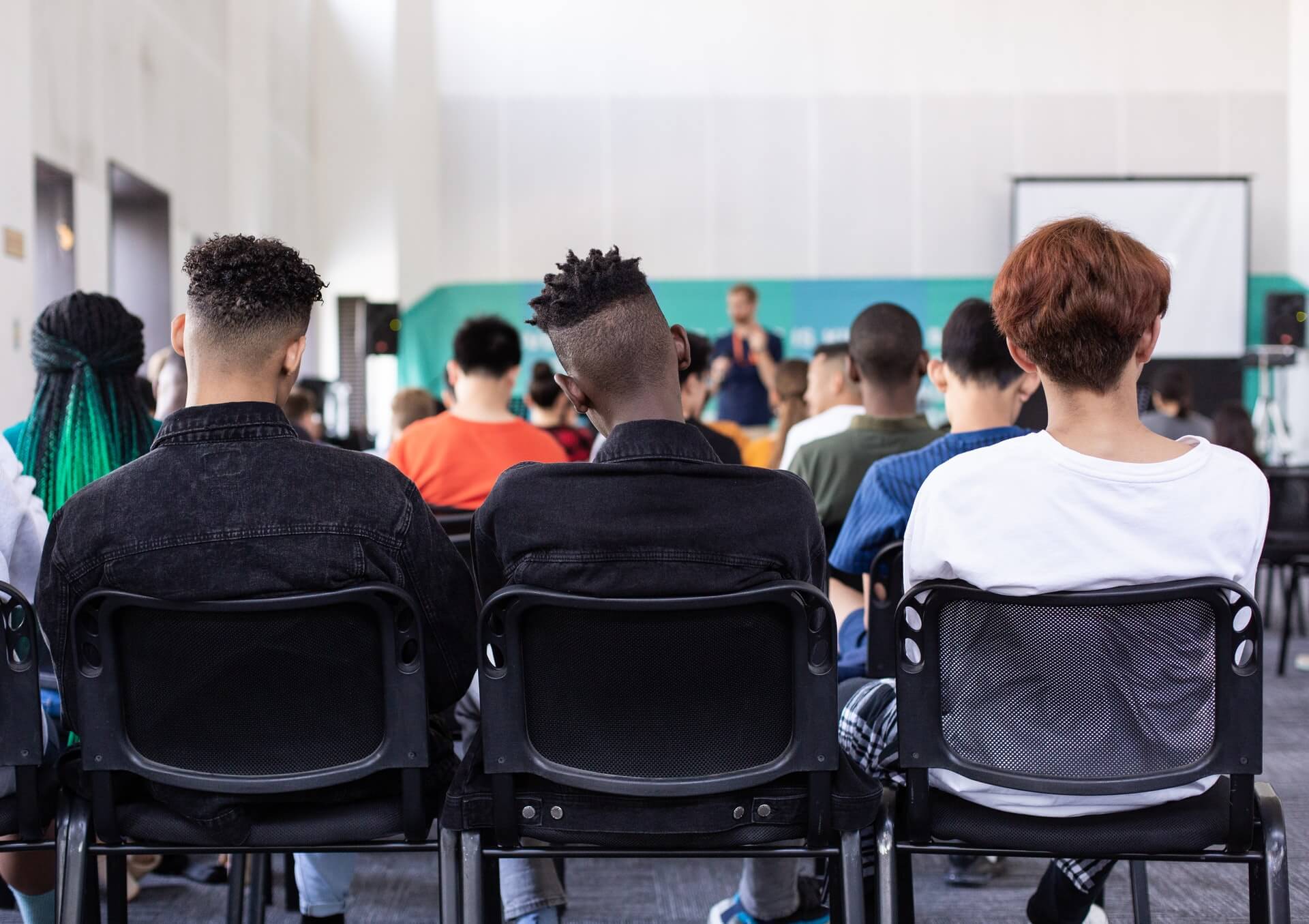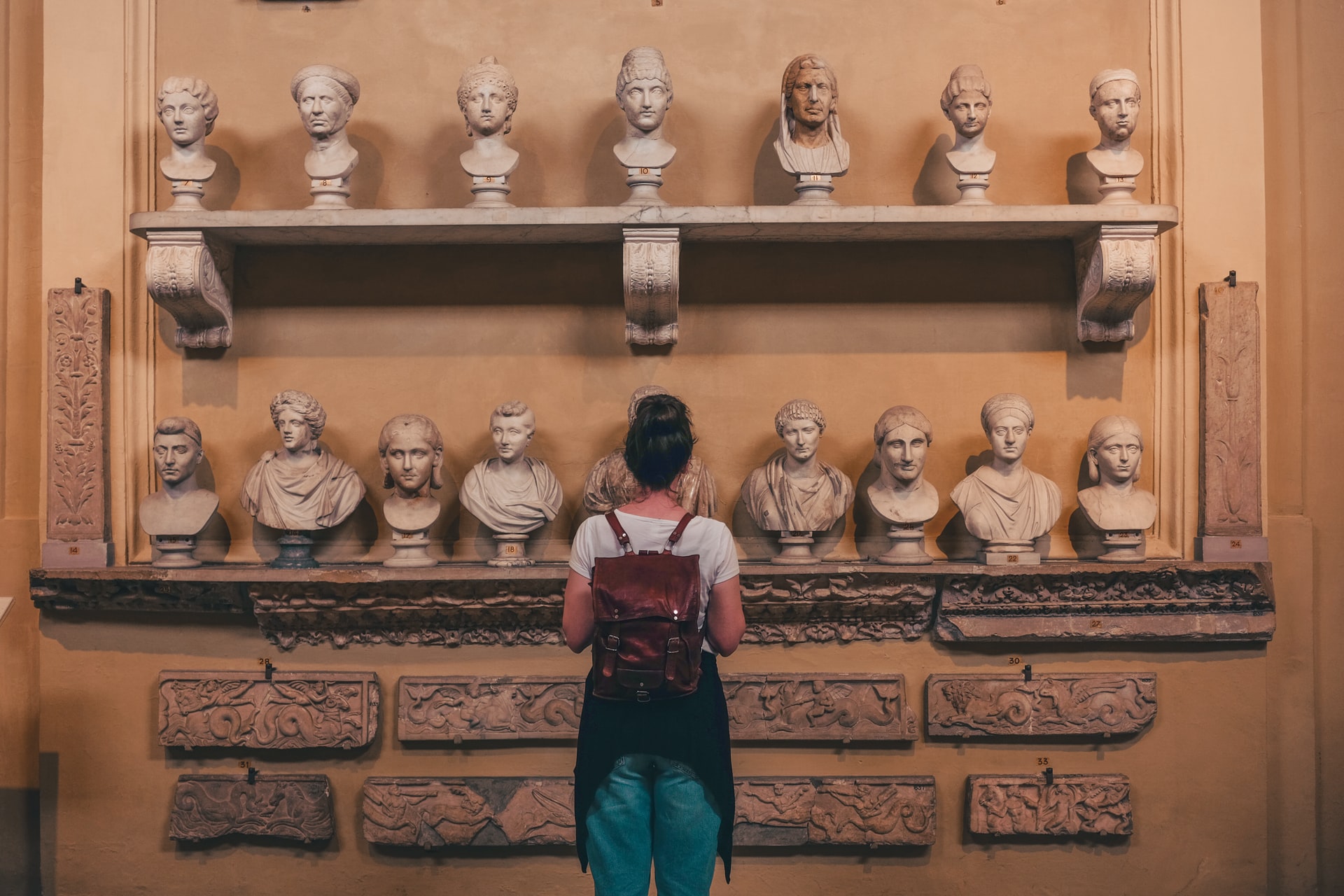XQ Design Principle: Community Partnerships
If learning can happen anytime and in any location, then we need to expand the definition…

If learning can happen anytime and in any location, then we need to expand the definition of what ‘school’ is to transform the high school experience. By engaging the full community and context of a school, we can acknowledge that learning does not need to be limited to the physical boundaries of a school campus. Creating vital, engaged community partnerships is one way XQ schools re-define learning by expanding where it happens, and these community connections are a keystone of each school’s success. In fact, community partnerships are one of six XQ Design Principles that ensure that students develop skills, create relationships, and identify passions that will help them thrive long after high school is in the rearview mirror.
What are community partnerships?
Community partnerships can take many forms, but at their heart, these powerful relationships create opportunities for learners to explore and envision their future, and set goals toward making it real. Cultural institutions, local businesses, nonprofit organizations, colleges and universities, and health and service providers—schools can develop partnerships with any and all of these to enhance learning and find solutions to real problems.
In successful community partnerships, learners engage in meaningful experiences outside of the classroom that connect to their passions, accelerate learning, provide opportunities to explore college and career pathways, build their resumes, and provide them with necessary social capital to thrive in the world beyond high school. Such experiences can help them develop relationships with mentors and role models who can guide them on their journeys.
[
Principles in Practice: Start making change today with the XQ Design Principles rubric.
]
“Adolescents benefit so much when they have opportunities to learn beyond the four walls of the traditional high school,” explains XQ Senior Advisor Anne Mackinnon. “By spending time in their communities—whether they’re involved in a project, doing an internship, conducting research, or something else—they gain confidence and grow their identities as learners. Community partnerships break down the barriers between school and the real world. They help educators envision learning experiences that are deeply relevant to students’ lives and futures.”
“Going to the museum school is not the normal way of learning. You’re given a set of rules, but you have the freedom to let your ideas flow freely. Having those types of projects helps me to gain skills like networking.”
Haylee, Student, Grand Rapids Public Museum School
Building mutually beneficial community partnerships requires intention. These elements can help make them successful.
- Mission alignment: Educators seek out partners that align with the school’s mission, vision, and values. This means evaluating partnerships to ensure ongoing alignment to the learners’ evolving needs and goals, including regular exposure to a diverse group of role models and mentors.
- Diverse and community embedded: Partnerships represent the full spectrum of passions, dreams, interests, and needs of learners and the community. The school prioritizes partnerships that can build learners’ social capital and shape their worldview. Cultivating partnerships that connect community members and non-educators with the school gives learners the opportunity to learn from those with different expertise, insights, and excitement about their field.
- Strive for symbiotic relationships: The partnership between the school and the partner is celebrated, honored, and mutually beneficial. Both the school and the partner get something from it, and as a result, the school consistently gains ties to and a deeper understanding of the community, and the community gains a deeper understanding of the school. Such partnerships contribute to closing opportunity gaps for learners as their community comes to know and care for them.

How do educators create community partnerships?
“Altruism has a rather short shelf-life, so the projects must be ‘real’ for the students and the partner.”
Trace Pickering, Executive Director, Iowa BIG
- Look for nice-to-have projects. Community partnerships that work to solve local problems is one way to forge a win-win relationship between schools, learners, and community members—but don’t start with mission-critical work. Look for the projects that community members would like to do, if they had time. The lower stakes takes the pressure off of both parties, and gives the local partner a tangible benefit.
- Give students early access to higher education. Partnerships with higher education institutions enable students to enroll in a class at a nearby campus, online, or take college courses offered on-site at their school. This access to college-level courses can fill gaps in the high school curriculum, and helps students see themselves as college-ready.
- Find opportunities that develop career awareness. Internships with local organizations and community service projects offer learners hands-on experience in fields of interest. They are also a way to forge lasting connections with mentors and role models that can serve students well beyond high school.
- Prioritize relationship building. Is there structured time for students to check in with a caring adult during the day? By ensuring that at least one adult has a positive relationship with a student, students are more likely to have academic success, reduced absenteeism, increased motivation and engagement, and reduced emotional distress. More than that, it can help educators nurture student’s passions and connect them with beneficial opportunities outside of the classroom.
What do community partnerships look like in action?
“My team designed, prototyped, and built animal enrichment games with the Central Florida Zoo in our Digital Information course. The ‘Chow Chucker’ is used with the black bears, warthogs, cheetahs, and rhinos. It’s like a t-shirt cannon that can ‘chuck’ food throughout the enclosures to help animals dissociate people and food.”
Lacie, student, PSI High
Strong partnerships in the community can take many forms. Here are a few examples.
Students at Elizabethton High School, in Elizabethton, Tennessee, created a prototype virtual reality experience of how Northeast Tennessee history is important to the greater context of American history across multiple generations. The goal is to submit the project for a National Endowment for the Humanities grant. So far, the Tennessee State Museum and East Tennessee State University History department have signed on as partners.
Latitude High School, in Oakland, California, engaged in “passion interviews” offering students the opportunity to connect virtually with experts from their community on topics ranging from aerospace engineering, architecture, and zooarchaeology, to self-driving cars, Bitcoin, and nursing.
Círculos teachers in Santa Ana, California, held passion sessions that provided time to engage students on any subject related to their passions, increasing curiosity, connection, and student engagement. When the pandemic hit, Cĺirculos expanded its network of community partners to include a much wider network thanks to the use of virtual presence technologies. Students took virtual classes like Theatre Arts 100 and Ethnic Studies at Santa Ana College. To develop their literary skills and sense of identity, students analyzed text from Trevor Noah and extracted lessons from Humans of New York, under the guidance of teachers and community partners like Freestyle Love Supreme.
The Wraparound Services department of Furr High School, in Houston, Texas, a department dedicated to connecting students and their families with resources that address non-academic challenges, offered a School Market throughout the year that aided in food distribution to Furr and HISD families.
Purdue Polytechnic High School, in Indianapolis, Indiana, partners to provide virtual counseling support for students and staff through a local 501(c)(3) organization. These services are offered at no cost up to five times a month.
PSI High, in Sanford, Florida, connected students with experts from the University of Florida Department of Physics in a Physics Career Exploration day. During the pandemic, the school created a virtual college fair with over 1365+ colleges and 1876 student participants joining from across the nation.

How can educators get started with building community partnerships?
“We work hard with our staff and our community partners to co-create authentic opportunities where students can experience success now and beyond high school.”
Bryan Davis, Curator of Talent, Círculos
Here are some tips for how to start powerful community partnerships.
- Look at how existing projects could be expanded to include partners. Start small. Work with students and colleagues to identify potential project then expand their thinking to include external partners. Explore what organizations in your local community would be a good match.
- Make the ask. Send a clear and simple email to your target partner with a summary of the program, why you are reaching out to them, and why they should consider partnering with you. If you don’t know the person you want to reach out to, have a mutual acquaintance introduce you. You can leverage the network of the entire school community – faculty and parents – to forge new connections and opportunities.
- Follow up. Once a partner is on board, check in with them regularly. Get feedback on how the project is going, and develop ways to adjust course in the middle so that projects stay on track, and students stay engaged.
- Use advisors. Consider building a small group of advisors from your existing partners to advocate for and enlist new partners, creating a shared connection to the school and its mission within the community.
Rethink Your High School Today
We created the XQ Design Principles Rubric to support the long-term, iterative work of continuous improvement. Developed in partnership with XQ schools and the improvement experts at Springpoint, the rubric helps ambitious high schools understand where they are on the journey to excellence—and how to take practical steps to achieve their goals.
Inside the rubric, teams can review a detailed set of “dimensions of practice” indicators designed to help them place their schools on a developmental scale (from emerging to sustained), picture what success could look like for their school, and chart a path to get there.
Currently a work in progress, the XQ Design Principles Rubric will be further developed in 2022 before being translated into a fully digital format.
Learn more.
Explore the other XQ Design Principles.
Meet the XQ Schools.
Sign up for XQ Xtra, our biweekly newsletter for educators ready to rethink high school.









